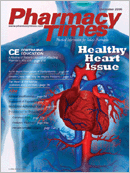Publication
Article
Pharmacy Times
LANDMARK STUDY PROVIDES HOPE FOR DEPRESSION
The findings ofthe last stage of agroundbreakingstudy on depressionsuggestedthat two thirds ofpatients in thestudy showed nosigns and symptomsof depressionafter trying upto 4 different drug combinations andtherapies. The federal study included3671 participants.
The 6-year, $35-million study evaluateda variety of depression medicationsin "real-world" settings"—patients seekinghelp at community clinics and physicianoffices. Of the 3671 adults withmajor depression, 50% had a family historyof it, and >50% had experiencedmultiple bouts themselves. All of theparticipants were started on ForestLaboratories' Celexa (citalopram HBr).
The study's findings, reported in theAmerican Journal of Psychiatry (November2006), showed that nearly 37%saw their depression go into remissionafter the first attempt. The remainingparticipants switched to another antidepressantor continued with Celexa andadded a second treatment. The second-treatmentoption helped 31% of thegroup. Results were seen in 3 and 4attempts with success rates of 14% and13%, respectively. When the researcherspooled all the results, they determinedthat 67% of the study group had beenhelped by 1 or more drugs.
The patients were not cured. Thosewho did improve or reach remission infewer treatment steps, however, hadlower relapse rates during a yearlongfollow-up period than those who had togo through more steps to improve orachieve remission.
"I think the overall results are hopeful,"commented Thomas Insel, MD,director of the National Institutes ofMental Health. "The problem withdepression is that people and theirfamilies feel hopeless. The messagehere is that medication can be helpful."







